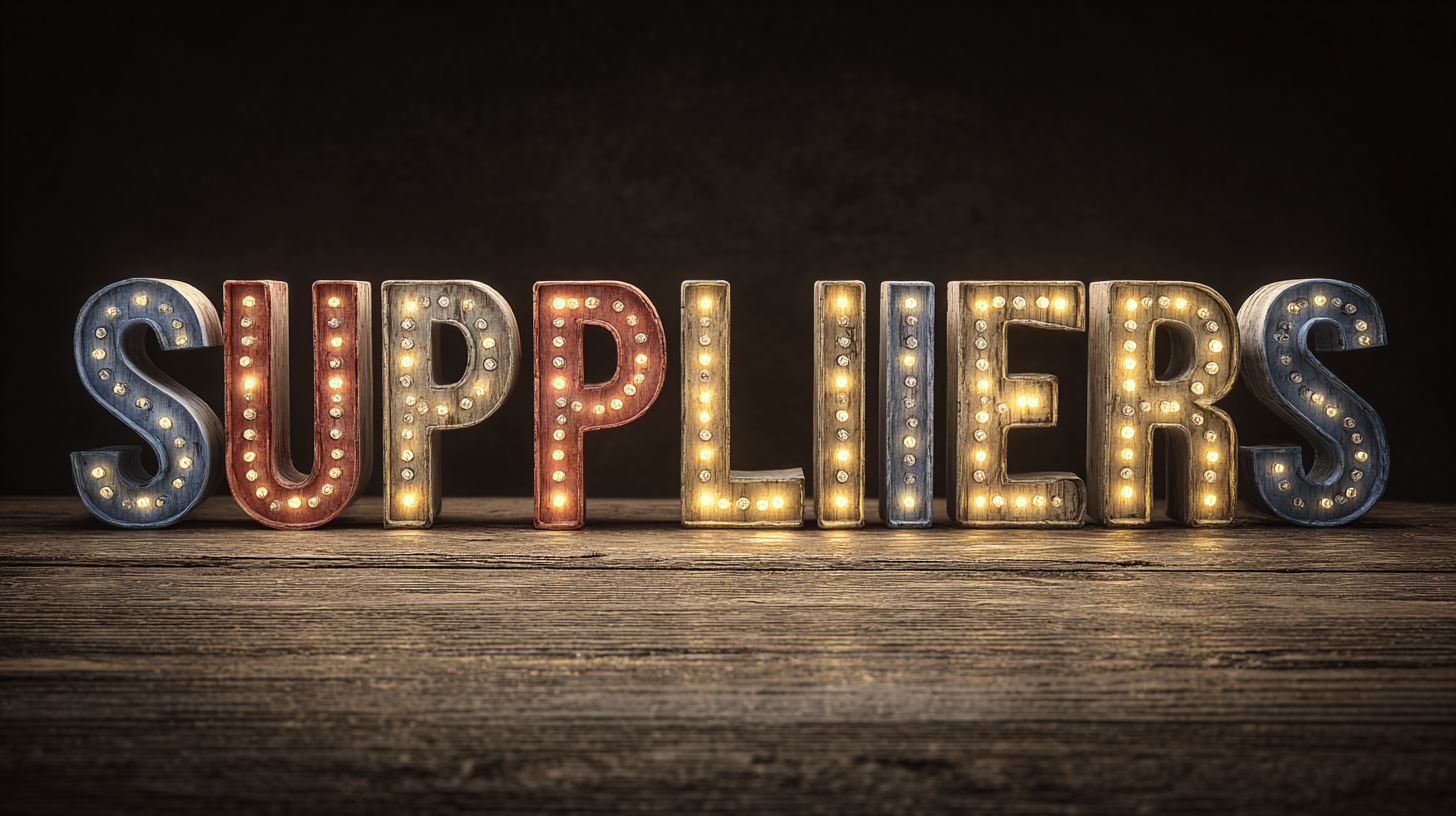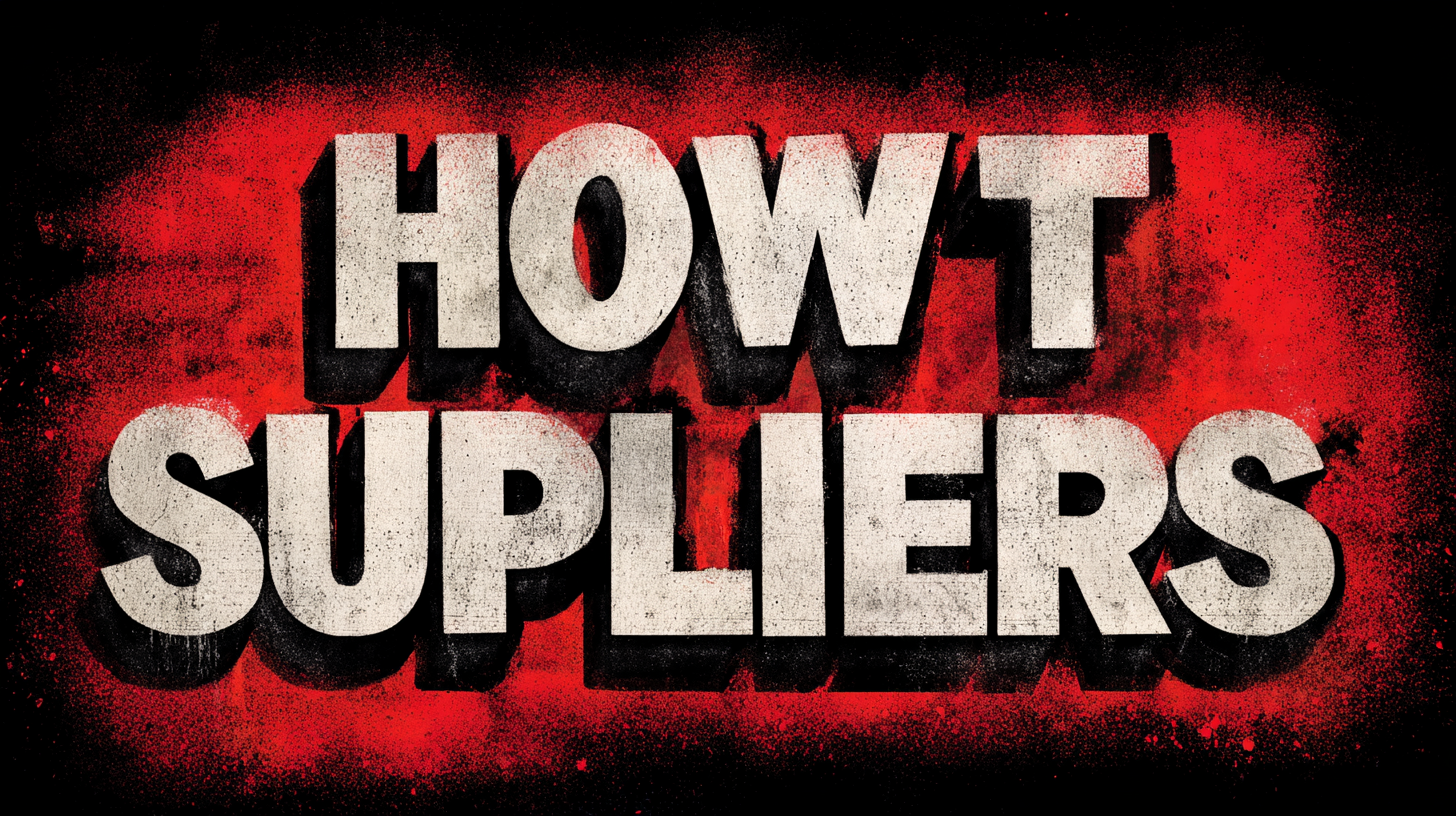

In today's fast-paced global economy, identifying the best suppliers is crucial for businesses striving for excellence and competitiveness. As companies expand their operations, particularly in manufacturing, the need for high-quality suppliers becomes ever more pressing. This comprehensive step-by-step tutorial will guide you through the essential processes of supplier identification, emphasizing the importance of quality, reliability, and cost-effectiveness. With China emerging as a powerhouse in global manufacturing and a source of pride, understanding how to effectively evaluate and select suppliers is key to leveraging these opportunities. By mastering the art of supplier selection, businesses can enhance their operational efficiency, optimize their supply chains, and ultimately create products that stand out in the market. Join us as we explore the strategies and criteria for finding the best suppliers to ensure your business not only competes but excels on the world stage.

When it comes to building a successful supply chain, identifying dependable suppliers is essential. Key indicators of supplier reliability and quality can guide businesses in making informed decisions. One of the primary indicators is the supplier’s track record. Reviewing past performance metrics such as on-time delivery rates, quality control statistics, and customer feedback can provide a solid foundation for assessing reliability. A supplier that consistently meets or exceeds expectations demonstrates an inherent commitment to quality and service, which is vital for long-term partnerships.
Another critical factor to consider is the supplier’s certification and compliance with industry standards. Suppliers who adhere to recognized quality standards, such as ISO certifications, not only showcase their dedication to quality but also their ability to meet industry benchmarks. Additionally, evaluating the supplier's financial stability can offer insights into their reliability. A financially secure supplier is more likely to maintain consistent operations and invest in quality improvements. By focusing on these key indicators, businesses can efficiently narrow down their choices and establish partnerships with suppliers who are equipped to meet their standards and drive success.
In 2025, the landscape of supply chain management is expected to be transformed by the advancements in technology, enabling businesses to evaluate supplier performance with unprecedented precision. Leveraging data analytics and artificial intelligence, companies can now track supplier metrics in real-time, allowing for informed decision-making. By implementing sophisticated software solutions, organizations can collect and analyze data related to delivery times, product quality, and compliance with safety standards. This data-driven approach not only enhances transparency but also fosters stronger partnerships between businesses and their suppliers.

Moreover, the integration of blockchain technology will play a crucial role in verifying supplier claims and ensuring authenticity throughout the supply chain. By utilizing distributed ledger systems, companies can maintain a secure and immutable record of transactions, which enhances traceability and accountability. This technological shift empowers organizations to swiftly identify underperforming suppliers while rewarding those who consistently meet or exceed expectations. As businesses become more reliant on technology, adapting to these tools will be vital for any organization aiming to build a resilient and efficient supply chain in the future.
Conducting supplier audits and assessments is a critical step in identifying the best suppliers for your business. The process begins with establishing clear criteria based on your specific requirements, such as quality standards, pricing, reliability, and ethical practices. Once you have defined these parameters, it’s essential to develop a structured assessment framework that includes questionnaires and checklists tailored to evaluate each supplier's capabilities. This will help you systematically compare potential suppliers and determine which ones align best with your company’s goals.
During the audit, it’s important to engage directly with the suppliers through site visits or virtual assessments. This allows you to observe their operations, inspect their product quality, and assess their overall organizational practices. Additionally, gathering feedback from current clients can offer valuable insights into the supplier's performance and reliability. Once the assessments are complete, compile and analyze the data to make informed decisions, ultimately ensuring that you partner with suppliers who not only meet your requirements but also contribute positively to your supply chain.
Building strong relationships with potential suppliers is essential for fostering long-term success in any business. According to recent industry data, companies that prioritize supplier relationships see a 20% increase in overall supply chain efficiency. This efficiency not only reduces costs but also fosters innovation and adaptability—key traits required to navigate the rapidly evolving business landscape.
In today's competitive environment, diverse supplier networks have become increasingly vital. A recent report highlighted that organizations engaging with diverse suppliers benefit from enhanced creativity and innovation, which can lead to a competitive advantage. Building connections through regular check-ins and partnership initiatives can facilitate these relationships. Companies around the globe recognize that forming strategic alliances is crucial to weather business shifts, and this approach can lead to stronger economic ties that go beyond mere transactional interactions.
Furthermore, organizations across various sectors emphasize the importance of nurturing these connections. For instance, reports from industry gatherings reveal that positive interpersonal relationships among leaders, policymakers, and supply chain representatives can significantly impact successful business operations. Establishing these bonds not only strengthens the supply chain but also lays the groundwork for future collaborations and sustained growth in challenging times.
In today's rapidly evolving supply chain landscape, leveraging data analytics has become imperative for identifying the best suppliers. By integrating advanced technologies such as artificial intelligence (AI), businesses can analyze vast amounts of data to enhance their supplier selection processes. Research indicates that companies utilizing AI can see a 20-30% increase in operational efficiency. This is achieved through improved decision-making capabilities and streamlined processes that minimize risks associated with supplier reliability.
Moreover, the adoption of emerging technologies, including blockchain and IoT, is not only revolutionizing procurement but also enhancing agility and resilience within supply chains. For instance, generative AI can model various sourcing strategies, allowing organizations to simulate potential outcomes based on historical data and current market conditions. A relevant study shows that implementing a robust digital strategy can yield a 15-25% reduction in procurement costs, as organizations are better equipped to identify and negotiate with optimal suppliers. By embracing these technological advancements, businesses can ensure they select suppliers not only on price but on a comprehensive value-based assessment.
